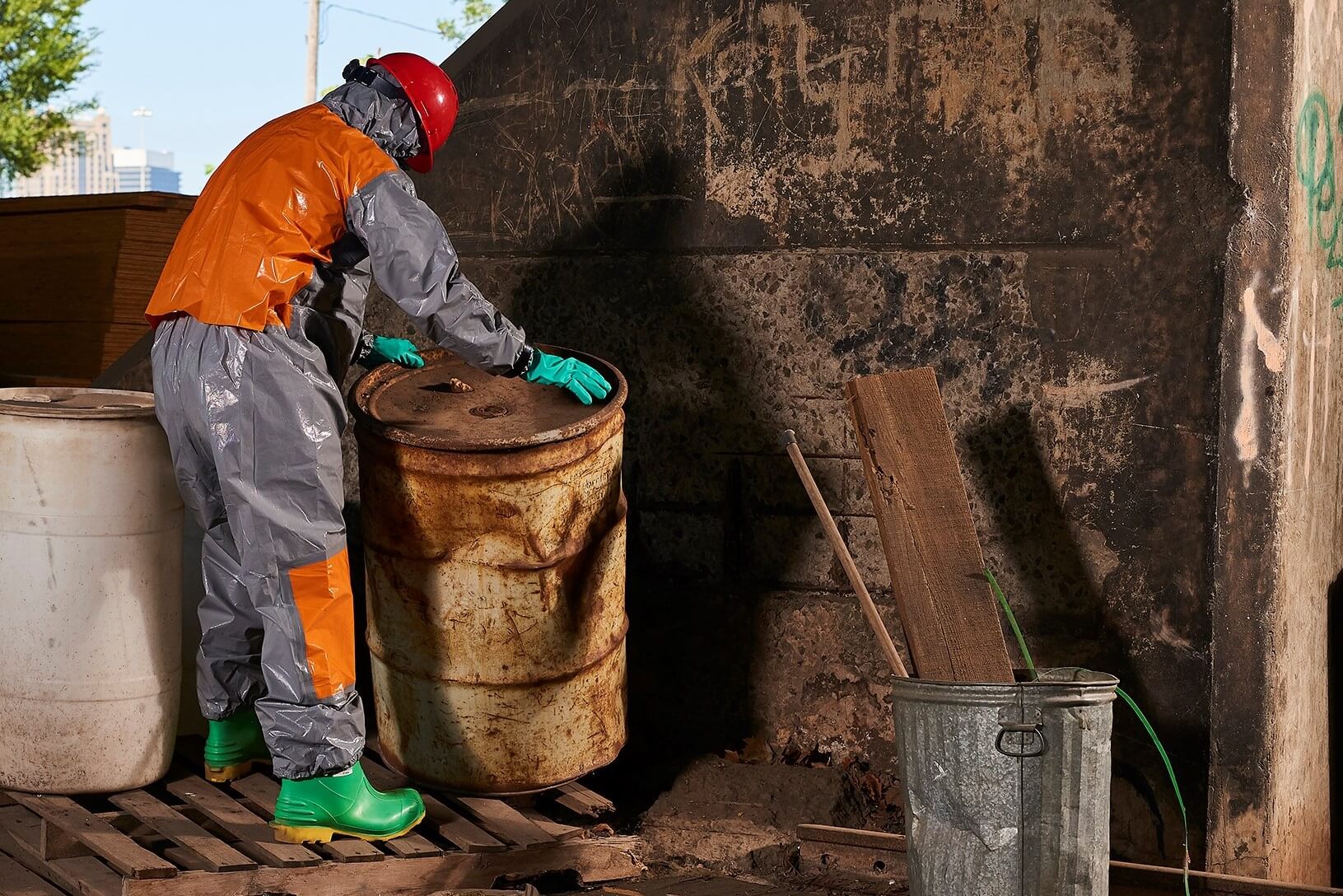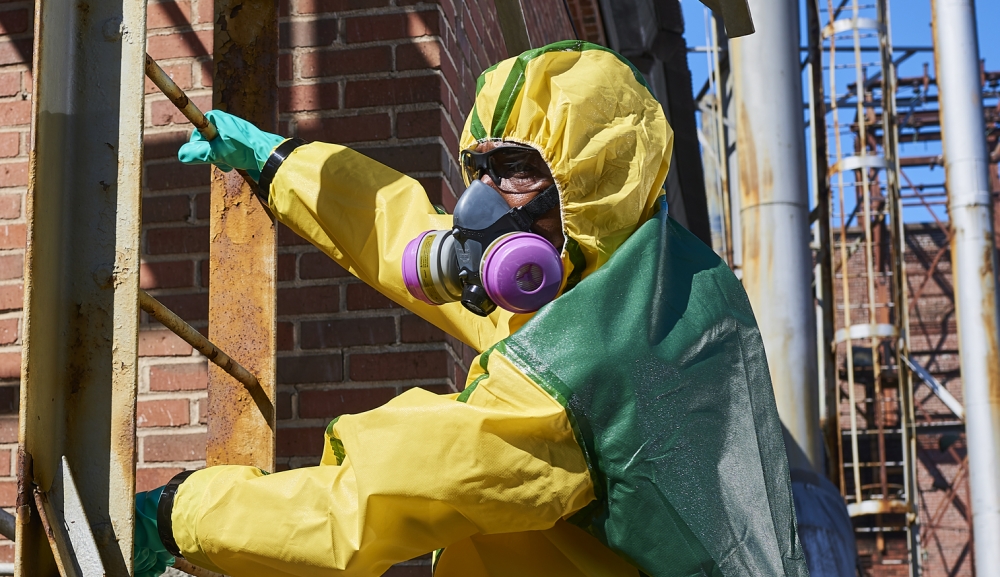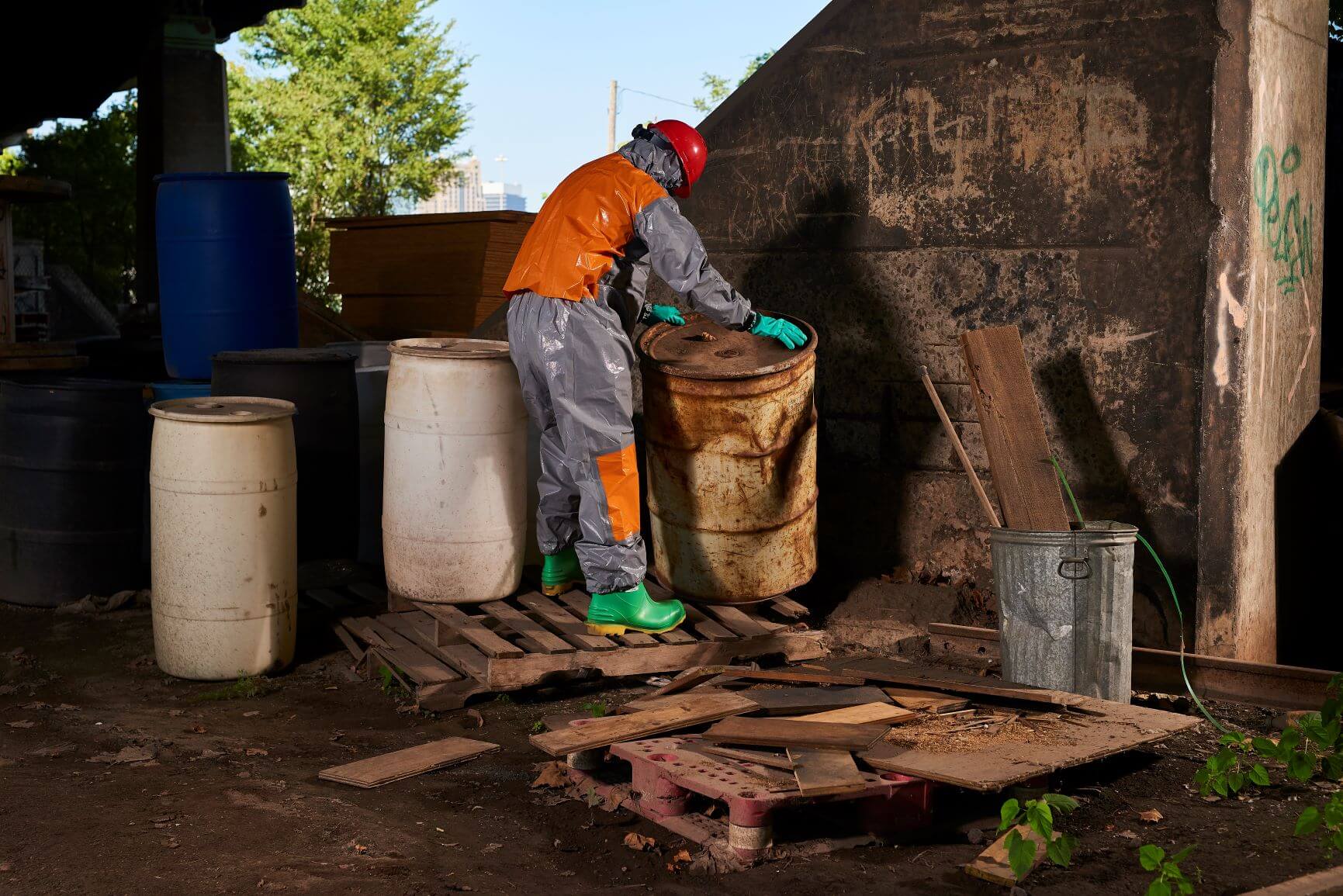I had the pleasure of sharing insight and knowledge of the products, the standards, and the pitfalls commonly found in the protection of workers against hazardous chemicals in multiple industries in my recent webinar with Health and Safety International.
CE standards for chemical protective clothing are complex and commonly misunderstood, leading workers to believe they are better protected than they really are when handling “killer chemicals.”
I answered the important question: If CE standards are misunderstood, does it matter? The simple answer is YES.
To view the full webinar, watch the video below, or continue reading to learn more.
Reality of Chemical Hazards
By some estimates, there are over 8,000 chemicals used on a daily basis in chemical factories worldwide, and this number is constantly increasing as new chemicals are developed. The long-term, serious health consequences of these chemicals are not always known because many chemicals will go unnoticed when they touch your skin. You may not get ill that same day or that week. It may take months, years or even decades before various health consequences emerge, including various cancers, diseases and birth deformities in babies.
One way to protect workers from these hazards is by fully understanding how CE standards are misunderstood. By using three specific examples, this webinar looks at the importance of understanding the hidden, and somewhat confusing, details of standards and the serious health consequences and pitfalls of misunderstanding.
1. Misunderstanding of Type Tests for Chemical Suits
There are five different Types of protection for identified in standards for chemical protective clothing. Each relates to a different form of protection against gaseous, liquid or dry particle chemicals. The final stage of Testing in certification is the whole garment Type Test that produces a pass or fail result.
It’s reasonable to assume that a pass means you’re safe and there has been no chemical penetration through the garment. This is not true. A pass actually does allow some penetration at a minimal, level. But it may not mean there is zero penetration.
Take, for example, the Type 5 dust protection test. According to this, the pass criteria can allow up to 15% of the dust in the surrounding air might get inside the suit. Because this 15% is a percentage of the dust in the atmosphere, more dust equals a higher volume of the chemical penetrating the suit. Therefore, this 15% may matter a lot when dealing with the long-term health consequences of many hazardous chemicals.
2. Misunderstanding the Standard for Protective Clothing Against Infectious Diseases
The EN 14126 includes requirements for clothing protection against infectious agents, viruses and bacteria. It contains four tests to measure the resistance of the garment fabric against penetration of different forms of contaminant.
One of these tests is the ISO 16604, which tests the protections against contaminated pressurized fluids. It’s important to closely read the information provided by some suit manufacturers because you may find an ISO 16603 test listed. This is in fact a precursor test for ISO 16604, and a test that shouldn’t be quoted to indicate of any level of protection. These two tests are not equivalent.
The proof of this lies in some products that quote this information which show a higher classification for ISO 16603 than for 16604. So quoting a non-existing ISO 16603 classification for a test that should not be used at all is very misleading and is a very important detail to notice and fully understand while dealing with viruses like COVID-19 and Ebola.
3. Misunderstanding the Chemical Permeation Test for Chemical Suits
When assessing a chemical suit, one of the first things people look at is the standard test (EN 6529) used to measure resistance to permeation of the chemical through the fabric. This test is often misunderstood with a common assumption being that the “breakthrough time” reported refers to when the point at which the chemical first “breaks through”, and therefore, indicates a safe-wear time limit.
This is not true; in fact the “breakthrough” in minutes the test reports is the time until the RATE of permeation reaches a particular speed – which means permeation has already occurred before the breakthrough time.
The result is workers may be contaminated with small amounts of chemical when they believe they are safe. In the case of highly toxic chemicals with long term health consequences this might be very important indeed.
These are just three examples of how standards for protective clothing are widely misunderstood, and how these misunderstandings can mistakenly put workers in danger. It’s also important to know standards define minimum performance requirements, and what is certified may not necessarily be suitable for your application because you may need more than the minimum.
The Solution
It’s important to never make assumptions about standards. Unfortunately, there is no simple solution to fully understand every detail of these standards because they are not always easy to read. Reading and fully understanding them takes practice, similar to reading Shakespeare. Although, it’s this practice of breaking down the details that will allow you to become an expert in what these standards are, how they are done, and what they’re actually telling you.
Webinar Question & Answer
The webinar was followed by an open question and answer session with a number of important issues being raised, such as:
- Are two suits better than one for chemical protection?
- If the permeation test does not indicate safety, is there a way to measure safe-time?
- Is there a methodology to test products in the intended environment?
- What are the key things to look for when selecting chemical clothing
- Is there any advice on managing an uncomfortable suit?
Watch the video to find out the answers… or keep reading below to gain expert insights.
Are two suits better than one in terms of chemical protection?
If you wear two suits, you’re going to be twice as uncomfortable as wearing one suit. But this is a great question. The natural space between two suits will provide an additional barrier for the chemical, which, in theory, could provide you with more protection. The problem with this is there is not going to be any way to confirm this through testing.
However, given that the purpose of PPE is to reduce or minimize risk (there is no such thing as 100% “safe”) then wearing two suits will certainly reduce risk more than wearing one suit. But given it will be impossible to quantify, the benefit is likely to be outweighed by the cost; more discomfort, which has all sorts of consequences, and higher financial cost.
Regarding the permeation test, is there a way to measure a ‘safe-time’?
One problem with the permeation test is that the test is measuring a completely different thing than what people are thinking. People think the results of this test give them a safe-use time, which it doesn’t. Although, there is a way to calculate a safe-use time using the Permasure app. This app is a free, mobile-friendly online tool that models permeation rates and provides safe-use times by incorporating environmental, temperature, and chemical exposure factors.
You can read more about manual calculation of safe-wear times here and about the benefits of using Permasure® here.
Is there a methodology to test products in the intended environment?
This is a great question that we also go into great detail in our blog. The problem with most tests is they are conducted in a laboratory and the parameters are often controlled. For example, all permeation tests are done at 23 degrees Celsius. We know the permeation rate is affected by temperature, so the permeation rate will be much higher than indicated by the test if your application temperature is higher than 23 degrees.
This is another great example of why we need to fully understand standard tests and what they are telling us. Very often, the purpose of these tests is to compare products – not to tell you if they are safe or not.
What are the key things to look for when selecting chemical protective clothing?
I would advise you to follow our 13-point checklist, which you can download from our website. The checklist covers the critical areas of selection, management, and use of chemical protective clothing. You can use this list to ensure you do not miss any important factors when selecting proper chemical suits.
Any advice on ways to manage an uncomfortable suit?
Chemical hazard safety suits are not very comfortable because the material does not breathe for obvious safety reasons. You can manage this in a number of different ways. First, manage and organize work processes to make sure people can take regular breaks. Second, put in hydration stations to make sure workers can stay hydrated.
There are also designs of suits that can provide comfort. We have a range of chemical suits called cool suits, which have breathable backs. Although, this type of suit can only be used in certain applications. By understanding the details of situations and product standards, you can adequately decide if an environment is safe to wear something like a cool suit.
You can read about the benefits of Cool Suits here the Cool Suit range here.
Do reusable suits follow the same standards as disposable suits?
There is no technical difference between a reusable and disposable suit. Whether a suit is described by its manufacturer as being reusable or disposable, you’ll generally find the properties of the suits are the same.
What’s important is knowing if a suit has been contaminated with a chemical because chemicals can permeate into the fabric and remain there. Reusing a contaminated suit can dramatically decrease protection because having the chemical already dissolved in the fabric reduces the permeation time.
You can read more about when it is safe or not safe to re-use suits – a major issue during the peak of the global Covid crisis – in our blog here.
How do you know if a suit is contaminated?
It’s very important to have close management of suits while they are in use. If processes are put in place and followed, you will be able to know when a suit has been contaminated. It’s all about following safety regulations and monitoring.




